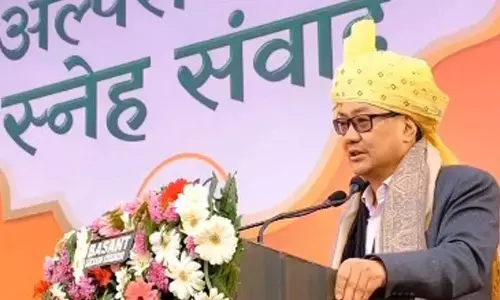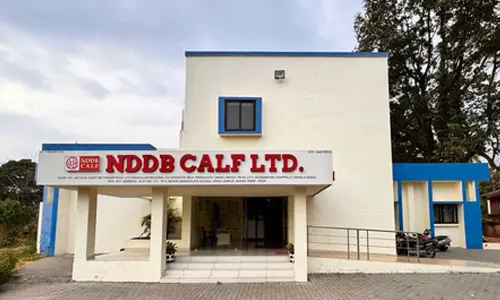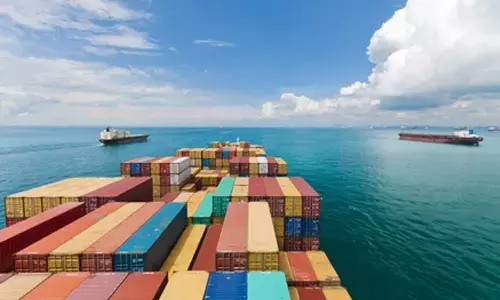Fish ponds gobbling up paddy fields

Threat of aquaculture taking over lush green paddy fields is looming large over the Godavari and Krishna delta regions. As aquaculture proved to be more economically viable than agriculture, a large extent of the paddy fields are turning into aquaculture ponds which has raised serious food security concerns. Environmentalists warn of soil and water pollution.
- A large extent of paddy fields are turning into aqua ponds
- Fish being cultured in over 4 lakh acres of agriculture land
- Environmentalists warn of soil and water pollution
- Farmers find aquaculture lucrative
- Aqua culture fetches `1 lakh profit per acre
- It is difficult to breakeven with paddy cultivation
- A few paddy farmers are up in arms against this trend

Vijayawada: Threat of aquaculture taking over lush green paddy fields is looming large over the Godavari and Krishna delta regions. As aquaculture proved to be more economically viable than agriculture, a large extent of the paddy fields are turning into aquaculture ponds which has raised serious food security concerns. Environmentalists warn of soil and water pollution. Aquaculture is being practised in more than 4 lakh acres in the State, which is mainly concentrated in Krishna and West Godavari districts.
Opposition against aquaculture is manifesting in the form of agitations by farmers particularly in West Godavari district. In fact, 15 farmers were recently arrested in Kesavaram of Ganapavaram mandal in this district, for protesting against digging fish tanks in the areas close to their paddy fields.
B Balaram, spokesman for the Andhra Pradesh Rythu Sangham, said that the farmers’ agitations are also taking place in Yanamaburru, Bhimavaram mandal, Gollalakoderu and Mogallu, Palakoderu mandal and Pamulaparru, Undi Mandal in the same district.
The cost of growing paddy is estimated to be around Rs 25,000 per crop-per acre. “Revenue, if farmers are not hit by nature’s vagaries, would come to Rs 12,000 approximately. Since a majority of the cultivators are tenant farmers, almost this entire revenue goes to the landlord for leasing out his land,” observed Godavari Delta Parirakshana Samithi convenor M V Suryanarayana Raju.
He added that the rising input costs and labour costs are pushing paddy farmers into losses. On the other hand, the production cost of raising fish in one acre is around Rs 2 lakh. According to sources, the revenue would be around
Rs 3 lakh subject to availability of water. While it is either losses or a no profit- no loss situation with paddy cultivation, a profit of Rs 1 lakh is possible if the farmer takes up aquaculture. This is luring farmers in taking up aquaculture.
Mudunuri Sita Ramaraju, an aqua farmer who switched to aquaculture, said that he would go back to agriculture only if he is convinced that it becomes profitable. He appreciated Chief Minister N Chandrababu Naidu’s stance towards aqua farming. “Aquaculture has made many middle-class farmers rich. More and more farmers will take to aquaculture if agriculture does not promise to be equally viable,” he pointed out.
Event though, fish is mainly confined to domestic markets for consumption, prawn has a great export potential. “Vannamei shrimp, a variety of prawn, which is cultured in 1.75 lakh acres in the State, yielded 2.2 lakh tonnes of produce last year. Out of which, 90 per cent was exported to EU and other foreign countries,” said D Radhakrishna Reddy, Aqua Farmers State Association president.
Speaking to The Hans India, Dr T Patanjali Sastry, an environmentalist, said that the “Blue Revolution” was only a fancy name to turn prime fertile lands into fish ponds. “It is no longer subsistence aquaculture. It has become a corporate affair.
The aquaculture that is being practiced these days is highly unscientific. It will lead to soil and water pollution,” he warned. The salt water that is used for aquaculture is let into the nearby paddy fields, thereby ravaging the crop. It might also lead to groundwater salinity in the entire area, he added. He highlighted that the need of the hour is to encourage eco-friendly aquaculture practices given this scenario of aqua boom.














